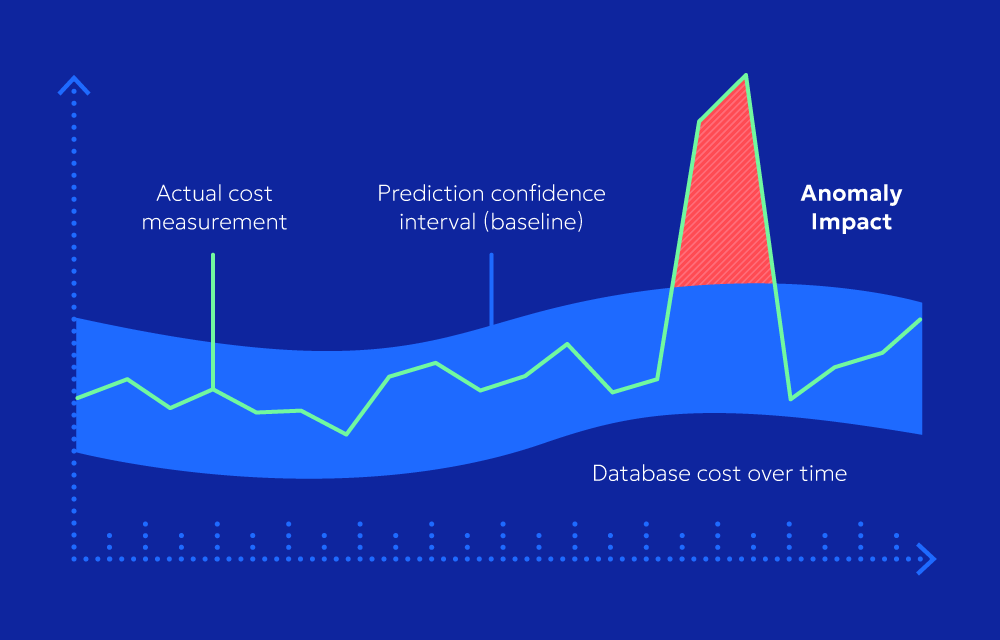What is cloud cost anomalies?
Cloud cost anomalies refer to unexpected variations in cloud spending that deviate significantly from established patterns. These anomalies can signal inefficiencies, misconfigurations, or unauthorized usage, which, if left unaddressed, can lead to substantial financial waste. Understanding, detecting, and managing these anomalies is crucial for maintaining cost efficiency in cloud operations. Monitoring cloud cost anomalies is essential for maintaining control over cloud spending, preventing unexpected cost overruns, and ensuring financial stability. By identifying and addressing anomalies, organizations can optimize resource allocation and usage, leading to more efficient operations. Additionally, effective anomaly detection enhances budget forecasting accuracy, reducing uncertainty and enabling better financial planning.
Types of Cloud Cost Anomalies
- Usage-Driven Variations
These anomalies arise from changes in resource utilization. They can be caused by factors such as increased application demand, scaling events, or new deployments. For example, a sudden spike in compute instance usage during a product launch can result in unexpected cost increases. - Configuration-Driven Variations
These anomalies result from changes in cloud configuration settings. Misconfigurations, such as leaving non-production environments running or incorrect instance sizing, can lead to significant cost increases. An example would be forgetting to shut down a large instance used for testing, which continues to incur costs unnecessarily. - Cost-Driven Variations
These anomalies are influenced by changes in pricing or billing mechanisms. They can occur due to factors such as changes in cloud provider pricing models, unexpected charges from third-party services, or fluctuations in currency exchange rates. For instance, an unforeseen increase in data transfer costs due to a change in the cloud provider’s pricing structure can lead to cost anomalies.
Historical Patterns
Understanding historical patterns is essential for identifying and managing cloud cost anomalies. By analyzing past usage and spending data, organizations can establish a baseline for normal cloud spending behavior.
In order to get the best overview of variations and historical patterns, utilize tools such as AWS Cost Explorer, Azure Cost Management, or third-party platforms like CloudHealth to analyze historical data. Look for trends and patterns in your cloud spending, such as regular monthly peaks or seasonal variations. This historical data helps in setting accurate baselines and thresholds for anomaly detection.
Thresholds
Setting thresholds is a proactive approach to managing cloud cost anomalies. By defining acceptable spending ranges, organizations can quickly identify deviations that require investigation.
Establish spending thresholds based on historical patterns and business expectations. These thresholds can be set at different levels, such as overall cloud spend, service-specific spend, or individual resource spend. Tools like AWS Budgets or Azure Cost Management can help automate this process by sending alerts when spending exceeds predefined limits.
Time Dimension
Opposite to anomalies, budgets are typically reviewed on a monthly, quarterly, or annual basis, which may overlook variations occurring within shorter periods. For effective anomaly detection, it’s crucial to monitor costs on a daily or consecutive-day basis. This approach helps identify anomalies that might be missed in longer review cycles, ensuring timely detection and resolution of unusual spending patterns.
History
The concept of cloud cost management has evolved significantly over the past decade. Initially, cloud cost anomalies were less of a concern due to the relatively straightforward pricing models and limited service offerings. However, as cloud services have grown in complexity and scale, managing costs has become increasingly challenging.
In the early days of cloud computing, cost management was primarily a manual process, relying on periodic reviews of billing statements. Over time, cloud providers introduced more sophisticated cost management tools, incorporating analytics and automation to help users identify and manage anomalies more effectively.
Market
Today, the market for cloud cost management tools are saturated with numerous native and third-party solutions offering advanced features such as AI-driven anomaly detection, predictive analytics, and automated remediation. Companies like Zesty, CloudZero, Spot, CloudHealth and others have emerged as leaders in this space, providing comprehensive platforms to help organizations optimize their cloud spend.
Challenges
- Detection Complexity: Requires sophisticated monitoring tools for analyzing large data volumes.
- Root Cause Analysis: Understanding underlying causes can be challenging.
- Real-Time Response: Proactive monitoring and automated alerting mechanisms are essential.
Concluding Remarks
Managing cloud cost anomalies is crucial for maintaining financial efficiency in cloud operations. By understanding the different types of anomalies, leveraging historical patterns, setting thresholds, and incorporating time dimensions into your analysis, you can proactively detect and address anomalies before they lead to significant overspend. Utilize automated tools, conduct regular audits, and implement strong governance policies to ensure your cloud costs remain under control.
Further Reading
- “Anomaly Detection in Cloud Computing Environments” by Chandola, V., Banerjee, A., & Kumar, V.
This paper provides a comprehensive overview of various anomaly detection techniques in cloud environments, discussing the challenges and methodologies used to identify anomalies in cloud computing systems. Link - “Machine Learning-Based Anomaly Detection for Cloud Applications: A Survey” by Zhang, Y., Zhang, N., & Zheng, J. This survey explores the application of machine learning techniques in detecting anomalies in cloud applications, offering insights into the effectiveness of different models and approaches. Link
- “Real-Time Anomaly Detection in Cloud Infrastructures” by Zecheng He, Ruby B. Lee
This study examines real-time anomaly detection systems for cloud infrastructures, focusing on the implementation and performance of these systems in managing cloud resources efficiently. Link



